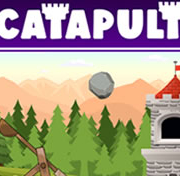Water Cycle Science Game
This science game helps children practice about water cycle. The water cycle is something that most geographers have heard about. Water that falls to earth through precipitation eventually results in water bodies such as lakes, rivers, seas, groundwater, and streams. This has profound impacts on the climate as well as a variety of other variables. All these factors are controlled by the water cycle, which controls temperature, humidity, and precipitation. Without it, life would not exist.
Water is everywhere and supports all life. Water also has incredible powers to alter shape, move mountains, create clouds, heat the poles and much more. We must not forget about the processes that move water. These include precipitation, evaporation and condensation. These are all part of the water cycle.
Evaporation
While most of the water on Earth evaporates, there are still some water traces that remain on land or in plant tissues. Some of this water is released by plants through their leaves. This is known as evapotranspiration, and it occurs in all green plants. The water that isn't being used by the biosphere collects in water bodies or evaporates from the sun. This cycle is vital for maintaining temperature and humidity levels on the planet.
Water that cannot evaporate would not be able to move from the ground into the clouds. Evaporation starts at 0°C and goes up as the temperature increases. The heat of evaporation is the energy needed to evaporate water. Water vapour evaporates at higher temperatures faster.
Precipitation
Precipitation is an important part of the water cycle. Precipitation refers to water that falls to the earth from clouds. Water vapor rises into the atmosphere due to the increased heat of the earth's surfaces. This is the beginning of the water cycle. The water vapor then rises into the atmosphere, where it turns to liquid water by condensation. It then falls as rain, snow, freezing rain, or sleet.
It is rain. These water droplets result from the saturation of Earth's atmosphere by water vapor. While some water vapor is lost to the atmosphere before reaching the surface, most of it does reach the surface. It can either fall to the ground as snow or rain, or it can seep into groundwater.
Plants
The water cycle begins with transpiration, which is one of the main processes. When plants absorb water from soil, they release it as water vapor. This process is controlled by microscopic pores in the leaves, called stomata. Stomata are strongly affected by light and are often linked to evaporation. The combination of transpiration, evaporation and heat is called evapotranspiration.
Atmosphere
Water follows a certain path as it travels around the Earth. This is called the water cycle. There are three types of water on Earth: liquid (vapor), ice, and ice. While liquid water can be found in rivers, lakes and oceans, vaporized water is found in the atmosphere. Water can undergo the water cycle almost immediately depending on its temperature.
Evaporation is the first step in the water cycle. The ocean accounts for 85 percent of the water in our atmosphere, and evapotranspiration produces 15%. Evaporation can be caused by plants, snow, and soil moisture. Water that is vaporized on the land must be balanced against precipitation that falls on the earth. Even animal breath can evaporate into the atmosphere. Therefore, the atmosphere is a reservoir for water vapor.
Reservoirs
The water cycle is dominated by reservoirs. Because they can store large amounts water, these reservoirs are crucial. There are smaller reservoirs found in lakes and on icebergs as well as large reservoirs. The residence time is the amount of water that has been stored in a reservoir. It's a measure of the time the water remains in a reservoir. This volume of water is constant, but the rate at which water leaves the reservoir changes.
The law of conservation is that water must be re-enterated into the atmosphere by leaving the reservoir. Reservoirs are an important component of water circulation between the air and the ground. They can be used to temporarily store water and maintain balance.










